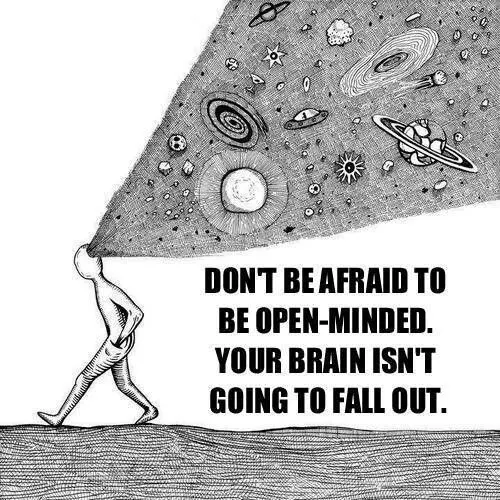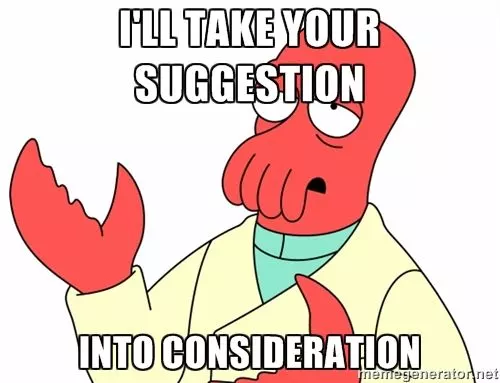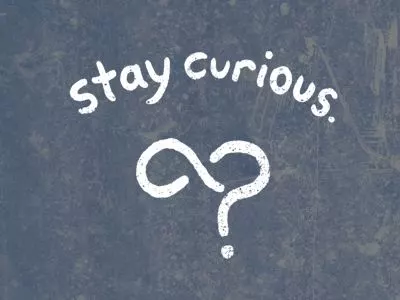“Remember that there is nothing stable in human affairs.Therefore avoid undue elation in prosperity or undue depression in adversity.” ~ Isocrates
Much can be learned through mistakes. Often the fool’s misstep can teach us more than the masters disciplined step. Faux pas is one of those unappreciated words that grips the heart of what it means to ‘be mistaken.’

It’s a tragically misunderstood concept, not even the synonyms do it justice: mistake, blunder, gaffe, indiscretion, impropriety, or solecism, to name but a few. In French it literally means ‘false step.’ And false steps can be embarrassing. But there’s no reason why we cannot flip the tables on our embarrassment and use it to our advantage.
I briefly touched on the concept in 6 Unconventional Ways to Kick Open the Third Eye. Faux Pas Dynamics takes the original ‘misstep’ or ‘blunder’ and stretches it out into a kind of sacred humility so that we can use it as a tool for further exploration into our own fallibility. It makes it dynamic, vibrant, and self-motivating.
It gets us out of our own way, clearing the fog of shame, by making it okay that we fail, okay that we’re imperfect, and by helping us to embrace our fallibility so that we don’t make the mistake of stumbling further into hypocrisy.
1.) We’re more capable of eating humble-pie
“Humility is as much the opposite of self-abasement as it is of self-exaltation. To be humble is not to make comparisons. It is in this sense that humility is absolute self-effacement.” ~ Mahatma Gandhi
 Faux pas dynamics helps us embrace our fallibility in a humorous way. It serves up a warm helping of crow and says, “Here, eat this. You’ll see more clearly if you do.” It’s the Oracle in The Matrix telling Neo: “Here, take a cookie. I promise, by the time you’re done eating it, you’ll feel right as rain.”
Faux pas dynamics helps us embrace our fallibility in a humorous way. It serves up a warm helping of crow and says, “Here, eat this. You’ll see more clearly if you do.” It’s the Oracle in The Matrix telling Neo: “Here, take a cookie. I promise, by the time you’re done eating it, you’ll feel right as rain.”
Only this cookie is laced with humility, injected with modesty, and infused with an unassuming nature. When we’re done eating the cookie, it really sinks in: we are insurmountably imperfect and that is absolutely okay.
Faux pas dynamics is humbling because it helps us gain a healthier perspective through all the tiny deaths of our ego. Each mistake, each blunder, each misstep, is a blow to our ego. And each blow leaves a tiny crack behind, through which the light of humility can shine.
When we’re able to embrace such humility and learn from it, we’re more able to take on the slings and arrows of vicissitude. We’re more able to adapt and overcome to the precarious waters of the human condition.
2.) We’re better able to engage sacred laughter rather than profane reverence
“All our previous positions are now exposed as absurd. But people don’t draw the obvious conclusion: it must also mean then that our present situation is also absurd.” ~ Terrence McKenna
With faux pas dynamics we’re more apt to throw humble-pie in the face of any and all people who take themselves too seriously, including, especially, ourselves. Humble pie is the antidote for self-seriousness after all. Faux pas dynamics forces our too-serious face into that pie.
Take politics too seriously? Humble-pie right in the bipartisan kisser. Take your religion as the be-all-end-all? Humble-pie right in the myopic mug. All your eggs in just one basket? Practicing faux pas dynamics tips the basket right over into that humble pie, making it even more robust, and making more of a mess when it splatters all over your self-serious visage.
Above all, faux pas dynamics helps us realize that things change. What seemed like a profound truth yesterday is an uncouth error today. But that’s okay. Take the humble-pie to the face and learn from your mistakes.
You’ll become all the more robust as your laughter at the futility of it all becomes all the more sacred with each exasperated chuckle. Faux pas dynamics subsumes all Ways as mere ingredients for a better, more bitter-tasting, humble-pie.
3.) We’re more able to laugh off our halo lest it slip down to choke us
“The greatest mistake you can make in life is to be continually fearing you will make one.” ~ Elbert Hubbard
Self-righteousness has no place while in the numinous throes of faux pas dynamics. Lest our newfound double-jointed spirituality give us too big a head, faux pas dynamics compels us to poke holes in the “holy” and plant seeds of counterintuitive humor into the pitiful loam of the reverent.
What we find is that we’re able to blaspheme with sacred whimsy and wily wit, realizing that our sense of humor always trumps our sense of seriousness.
It takes daily discipline to poke holes into our own ego. Faux pas dynamics helps us practice this daily act by first revealing the foundation: fallibility. Second, by building a flexible structure of trial-and-error that we’re free to move in and out of.
Third, by helping us to become better swimmers in the crushing water that eventually tears that structure down. And fourth, by realizing that the halo we vainly held above us, is better laughed off into the very thing that keeps us afloat: a good sense of humor.
4.) We’re free to mock all isms with Brouhaha-ism
“The soul demands your folly; not your wisdom.” ~ Carl Jung, Red Book
Brouhaha-ism is a sub art of faux pas dynamics. It’s the ism that trumps all isms. It is the only ism that doesn’t take itself, or anything, too seriously. A brouhaha is a boisterous and overexcited reaction to something.
Brouhaha-ism is laughter at all things, especially those things that people take too seriously. It allows for unruly interregnum, a space for sacred interruption so that we can take account of those things we’ve taken for granted.
Embracing brouhaha-ism is throwing ourselves into the maelstrom of human caprice, into the frenzied vortex where all things are measured utterly laughable, and then promptly laughed at.
It’s a sacred swimming through the frigid waters of our human tendency to cling to ways of doing things despite other ways, which then warms up those waters into a boiling, roiling, frolicking tidal wave of sacred whimsy and soul-expanding humor that crushes all creeds, codes, and canons.
The high laughter gained through brouhaha-ism expands all comfort zones, crumbles high-horses into kindling, and obliterates paradigms into paradox.
We discover that when we stare into the abyss it doesn’t matter if the abyss stares back, because even that is just as laughable, and maybe even more laughable, than anything else.
5.) The drive to play requires suppression of the drive to dominate
“Humanity has advanced, when it has advanced, not because it has been sober, responsible and cautious, but because it has been playful, rebellious, and immature.” ~ Tom Robbins
 Through faux pas dynamics we’re free to practice reverse-dominance on ourselves and on others through sacred play. Work hard, play harder becomes the theme.
Through faux pas dynamics we’re free to practice reverse-dominance on ourselves and on others through sacred play. Work hard, play harder becomes the theme.
This expands our perspective not only because it helps us to not take ourselves too seriously, but also because it keeps morale high while empowering the disempowered and humbling the powerful.
In the long run this sort of sacred play, this good-natured ribbing, is a leveling mechanism that keeps things balanced enough to where power never gets to the point to where it becomes corrupt.
Faux pas dynamics compels us to be more sincere, but less serious, with ourselves and with each other. It laughs at all hardened hearts. It shatters all preconditioned molds and presubscribed states. It propels the mystic forward, catapulting his foolery into wisdom by jettisoning attachment and cultural conditioning while showing others how to do the same.
As Joseph Campbell said, “The schizophrenic is drowning in the same waters in which the mystic swims with delight.” Indeed. Being a walking, talking, proactive ball of laughing transparency is a sure-fire way to keep the powers-that-be in check while keeping your heart chakra spinning against moral complacency and your third eye wide open to Truth.
In the end, perhaps nobody has said it better than Mark Twain: “Life is short, break the rules, forgive quickly, kiss slowly, love truly, laugh uncontrollably, and never regret anything that made you smile.
Twenty years from now you will be more disappointed by the things you didn’t do than by the ones you did. So throw off the bowlines. Sail away from the safe harbor. Catch the trade winds in your sails. Explore. Dream. Discover.”
Image source:
Toys by Edu Monteiro
Einstein quote
Dunno if laughable
Duncan quote








 You want to leverage open-mindedness despite the close-minded majority? Then stay curious. Rage against the withering of your mind. Seethe against the atrophy of your spirit.
You want to leverage open-mindedness despite the close-minded majority? Then stay curious. Rage against the withering of your mind. Seethe against the atrophy of your spirit.












